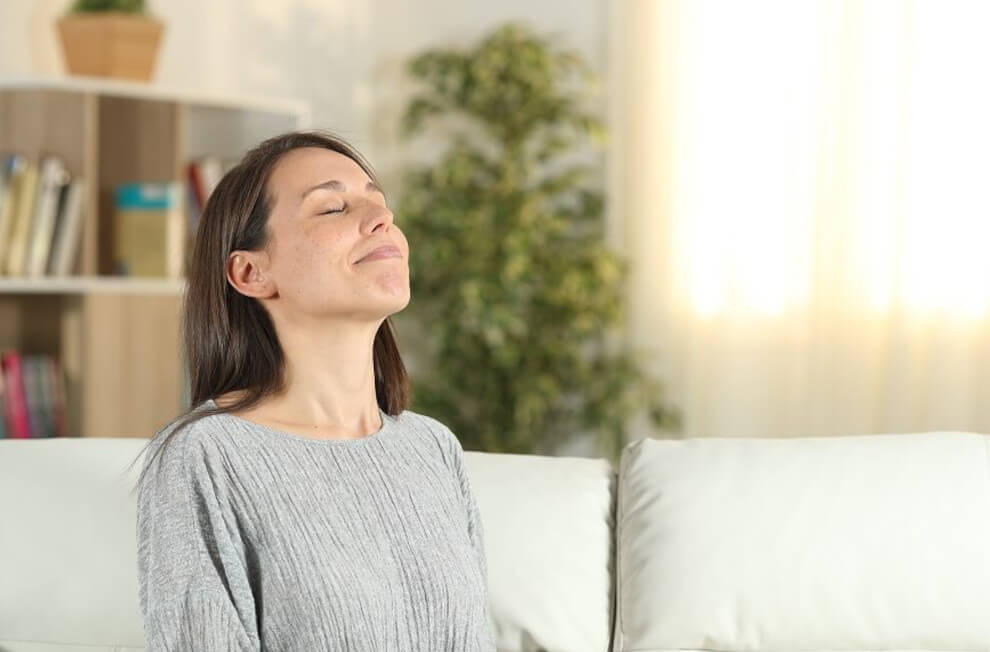In the sweltering summer months, you can rest assured that your home will remain comfortably cool thanks to your air conditioning system. During the peak of the pandemic, however, you wanted more than merely a cool place to stay; you also wanted a clean place to stay. Do you think your air conditioner contributes to cleaner air? But how?
An Explanation of How Air Conditioners Function
Essentially, the only purpose of your air conditioner is to maintain a comfortable indoor temperature, and it does so through a feedback loop between the indoor and outdoor units:
- The condenser in your outdoor unit transfers cooling fluid to the evaporator in your indoor unit, which cools the air in your home.
- The evaporator takes the cooling fluid and turns it into a gas, which is then released into the atmosphere. The warm air is removed from your home at the same time the air conditioner is pushing cool air inside.
- Back to the external unit, where it will be cooled and the cycle will restart, the warm air is transferred.
- Even though your air conditioner is working hard to keep the heat out, it is not effective at removing airborne pollutants and debris without a filter.
Myths About Air Conditioners Persist Even in the Face of Evidence
Inside Air is Brought in by the Air Conditioner
False. To cool your home, air conditioners reuse the air that already exists there. When an air conditioner is turned on, its refrigerants, fans, and evaporator coils work together to circulate cool air through the space. That’s not because of a lack of ventilation in the house.
An Air Conditioner’s Filtration System Removes Pollutants From the Air
False. A/C units do not and cannot clean the air in a room. Dust, pollen, and other allergens are filtered out by the air filter situated close to the return air duct or air handler. However, air filters are not just a part of the air conditioner; they are an integral part of the heating, ventilation, and air conditioning system. A higher MERV rating indicates that the air filter can capture more particles and finer particles than a lower MERV rating. The condensing unit is not responsible for cleaning the air inside the house, but the air filter that is used does.
Filters Don’t Clean the Particles in The Air
Air filters remove contaminants like dirt, dust, bacteria, and even human and animal hair from the air before it’s pumped into your home’s ventilation system. You and your family won’t have to worry about breathing in harmful dust and other particles thanks to the air filter.
The debris in the air can be sifted out by some air filters more effectively than by others. Maximum Efficiency Reporting Value (MERV) scales are used to rate filters based on how well they remove contaminants. A higher MERV rating indicates a more effective filter; the scale goes from 1 to 20. You should use 8-13 rating filters in your home or office. When set to an 8, your filter will trap 99.97 percent of pollen, mold, dust, dirt, and hair. A 13 means that all of that, plus bacteria and virus particles, will be eliminated. A High-Efficiency Particulate Air (HEPA) filter is the most effective type of air filter, capable of removing 99.7 percent of airborne particles.
How Can I Improve the Quality of Air in My Home?
To what extent can indoor air pollution be mitigated if air conditioners are inoperable? A device to clean the air is the solution. This appliance’s mission is to purify the air so that you and your loved ones can breathe easier. In a busy city, where pollution and smog are common, the air quality may be poor. Appliances in older houses may also be a contributing factor if they give off unpleasant gasses and odors.
You should consider purchasing an air purifier regardless of the source of the air pollution. When you return home, turn on the air purifier and let it run for a while. Then you can kick back at home, assured that the air you’re breathing is secure. Most modern air cleaners have at least two distinct settings. If you are the only person living in the house, you can direct the purifier’s stream to come directly to you.
Purifying empty rooms and corridors serves no purpose. Tell the purifier to cover a larger space if you have a dispersed family. However, the rest of the house will be clean, and the purification will be effective even where you are standing. Modern air purifiers come in a wide variety of designs. The standard version will serve your needs just fine in most cases. Make sure it has a solid foundation and ventilation is addressed in the blueprints.
IAQ Solutions and Air Conditioning Go Hand in Hand
We don’t think you should forgo your air conditioning. Not that we’re even implying that. Instead, you should know that an AC unit is only a part of the whole. Complete HVAC systems are made up of several different components. An air conditioner cannot improve indoor air quality on its own. However, IAQ improves significantly when supplementary devices are installed alongside the HVAC system.
Filter Maintenance for Air Conditioning Systems
To keep your air conditioning unit functioning at peak efficiency, you should change the air filter every two months. While the air con is turned off, gently wipe down the filter with a damp cloth if it is not removable. Don’t restart the AC until the filter has dried completely. Afraid of what you might be breathing in your home? Additional steps you can take to better it are as follows:
- A/C off, windows wide open: Ventilate the space to replace some of the stale recycled air.
- Run the vacuum at least every week to collect dust and other particles that could become airborne.
- If you suffer from severe allergies, using an air purifier equipped with a HEPA filter can help to improve indoor air quality, especially in a room with insufficient air circulation.




